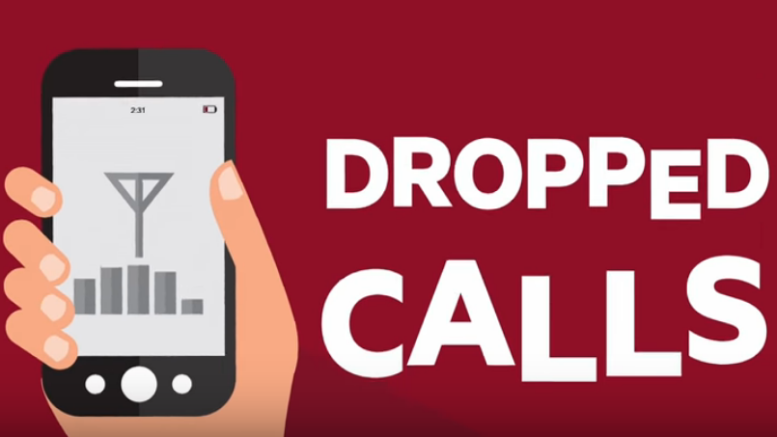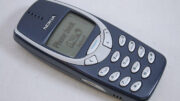We all know that in this day and age many of us heavily rely on our mobile phones. So how is it then that reliable cell phone reception is still an iffy prospect?
It happens to everybody. You’re on a call and the connection drops out. Or maybe you’re using a GPS app to find an unfamiliar address, and it suddenly quits working because the signal has disappeared. Now, what do you do? Drive around in hopes of picking up the signal again?
Read on to learn what causes dropped calls and how to fix this problem.
What is a dropped call?
A dropped call happens when your phone gets disconnected somehow from the cellular network. Usually, this happens because of poor cell signal wherever you are that causes the call to drop.
Why does my phone keep dropping calls?
Whether you have an iPhone or Android phone, we all love to blame our cell service providers for poor coverage and dropped calls. The truth is, most of the time it’s not their fault.
Often the culprit is something between us and the cell tower that blocks the signal or the distance from the cell tower. The signal-blocking obstacles can be man-made or naturally occurring, but the result is the same.
- Distance from the nearest cell tower
This is almost always the first thing we focus on when calls keep dropping. After all, cellular signals are radio frequency waves and they behave like any other RF signal. Think about the FM radio in a car. If the receiver (in this case your cell phone or tablet) is too far away from the signal source – for our purposes, a cell tower – then the signal will be weak or may be undetectable.
- Natural obstacles that block cell signal
Local terrain like hills, mountains, ridges, bluffs, and similar terrain will block cell signals. Any situation in which there is higher ground between your phone and the cell tower can cause signal issues.
Vegetation like trees, shrubbery, almost any kind of foliage can refract RF signals and interfere with your cell reception. Ask anyone who lives in a heavily wooded area how their cellular reception is. They’ll tell you – trees are wonderful things, but they do NOT enhance signals.
Atmospheric conditions like poor weather can block signals. Even dust particles in the air can reflect and refract RF signals. A foggy day? Water vapor can diffuse RF signals.
- Man-made obstructions to mobile reception
If your cell phone drops a call in your house, the building itself could be blocking your cell reception. RF waves don’t easily penetrate the brick, metal siding, concrete, steel, coated glass and other materials that form the exterior of most modern buildings.
In urban areas, even when you’re outdoors, large buildings and other structures can deflect or distort RF waves and mess up your cell reception.
Most of us have experienced a disconnected call while inside a vehicle, and then noticed an improvement in voice quality or data speed once we step outside. Those metal-and-glass encased vehicles we drive do an excellent job of blocking cell phone signals. Research shows that on average cell signal strength drops by about 30 percent inside a vehicle.
With all these elements stacked against us and our calls keep dropping, what can we do? Here are some simple tips and tricks to help you find a solid cell connection.
How to Fix Dropped Calls
- If there’s a case on your phone, remove it. Test to see if the signal is better without the case. A case can block cell signals from reaching your phone’s internal antenna, so removing it may improve your reception.
- Be sure you don’t block the internal antenna while holding your phone. Be aware of the position of your hand on the phone while calling, texting, etc. Try a different hand position to see if reception improves.
- Keep your battery charged A low battery can negatively impact your phone’s ability to get and hang onto a cell signal.
- If you’re moving, stop. When stationary, your phone, and the network don’t have to constantly adjust to your changing location. This makes it easier to get and hold a strong signal.
- Go outside and get clear of any obstructions. Find an open area like a plaza or a park where cell signals are more likely to reach you than when you’re standing on an urban street surrounded by tall buildings.
- Change location to see if reception is better. If you’re inside, move to another room of the house or into your office corridor. Or try next to a window, where cell signal may better penetrate the exterior walls. If in a vehicle, try driving a mile down the road.
- Increase your elevation. As mentioned above, anything between you and the cell tower can block the signal. By moving to the top floor of your home, office building or even the roof of your apartment building you reduce the chance of obstructions blocking the cell signal. If you’re driving, find a high spot and park there.
- Try Wi-Fi calling. All newer smartphones allow native Wi-Fi calling and texting, which is supported by all major U.S. cell carriers. There also are a bunch of messaging apps now for audio and video calling. So, if you have solid Wi-Fi coverage in your location, it may be a perfectly good substitute for the spotty cellular network.
- Use a web site or app to find the nearest cell tower. When you know where the cell tower is located, you know which direction your signal is coming from. Once you know that, move to the side of the building nearest the tower to see if reception is better. If you’re outside, try to get clear of any signal-blocker obstructions between you and the tower.
- Switch to 3G. Many areas of the U.S. and Canada are still covered primarily by 3G cell service. Turn off your LTE service to see if you can get a better connection and improved coverage by using the 3G network. How you turn off 4G service can vary by carrier and phone model.
Best Solution for Your Phone’s Dropped Calls
Get a cell phone signal booster. This is your best option to improve cell coverage inside a home, building or in a vehicle. Cell signal boosters take existing cell signal and amplify it to give you better cell service and end the annoyance of dropped calls. They also work with all cell carriers and networks.
Quick Recap of How to Fix Dropped Calls:
- Take the cover off your phone.
- Don’t block your phone’s antenna.
- Keep the battery charged.
- If you’re moving, stop.
- Go outside / get clear of obstructions.
- Try a different location.
- Increase your elevation.
- Try Wifi calling.
- Find the nearest cell tower.
- Switch to the 3G network.
Fed up with dropped calls? Then check out the great selection of boosters available at Solid Signal.




